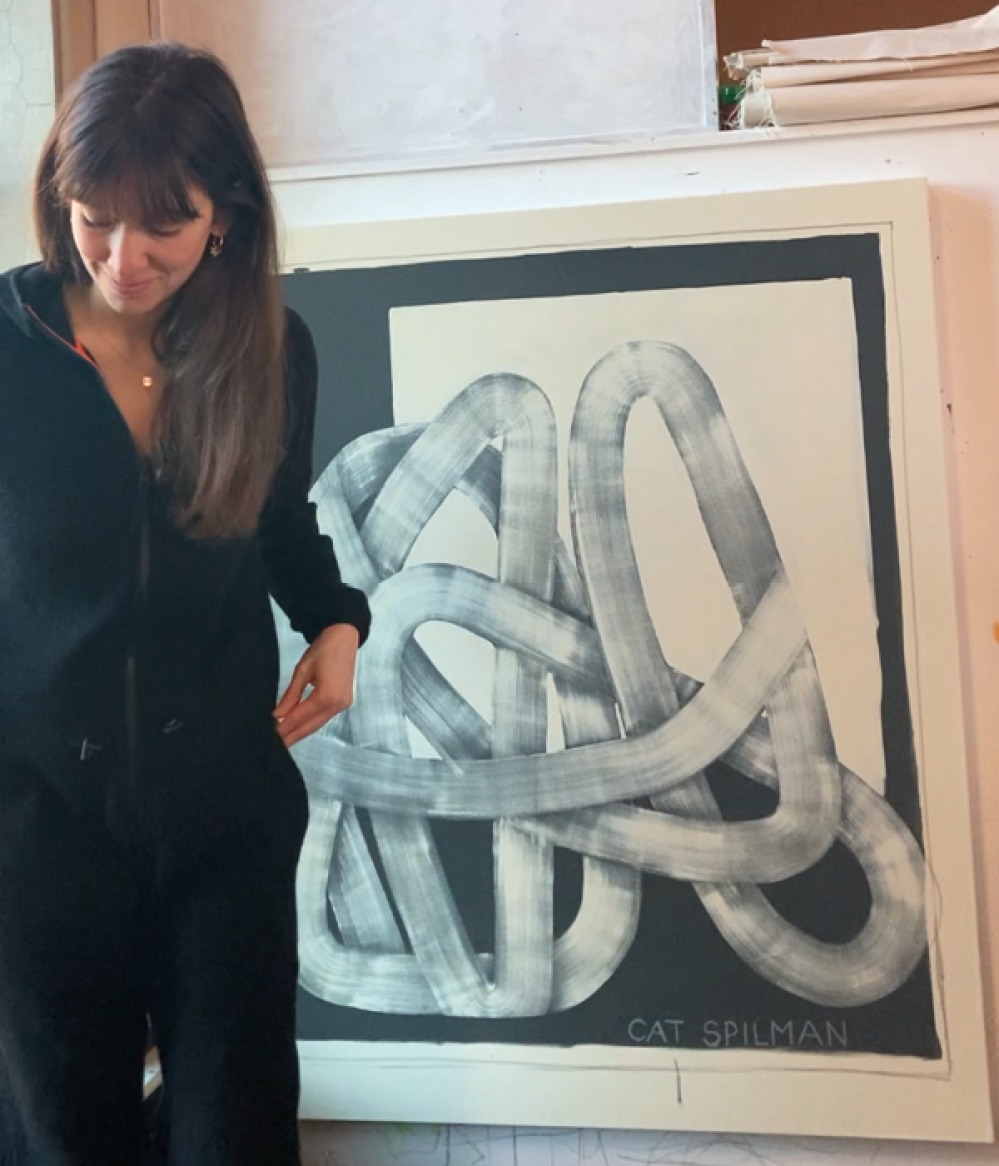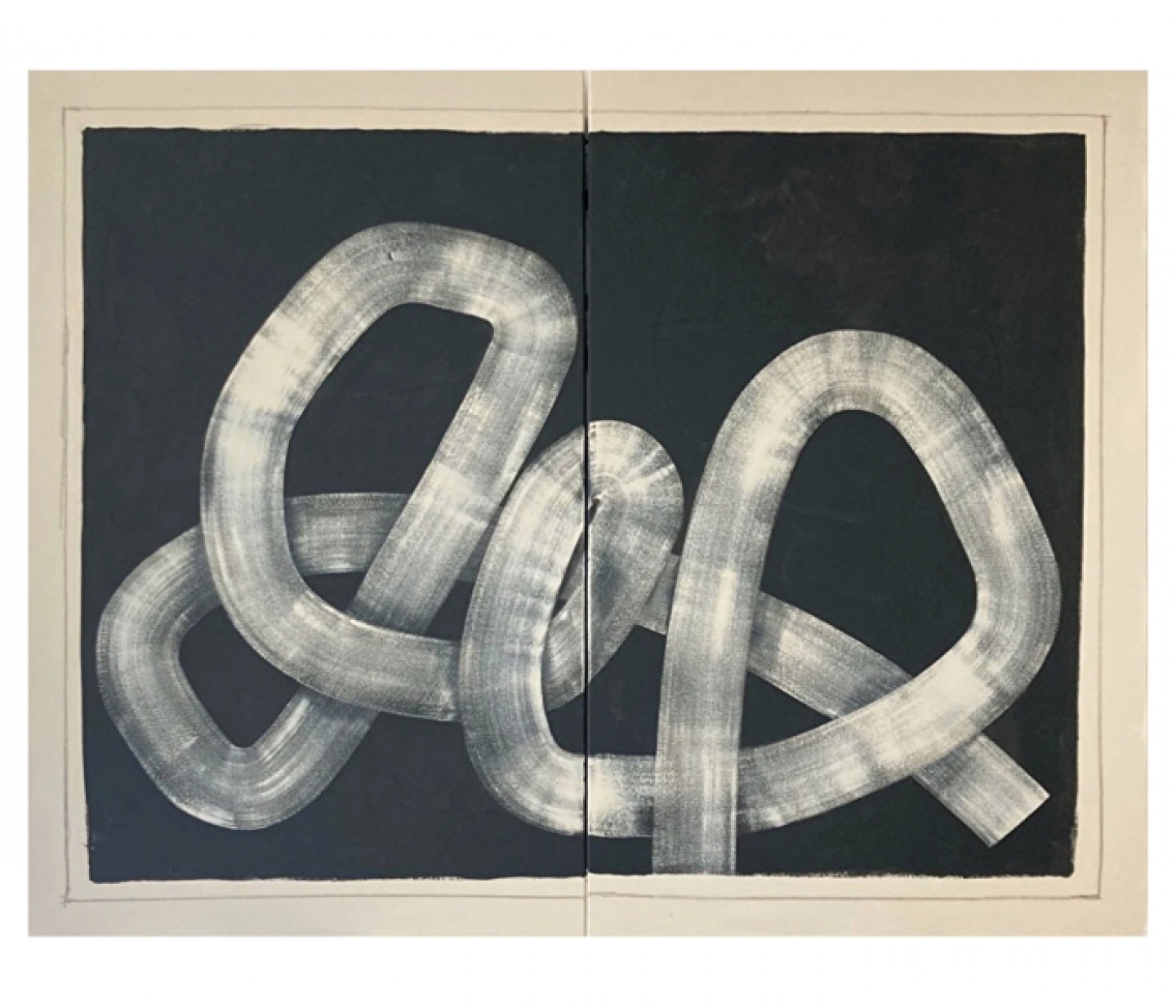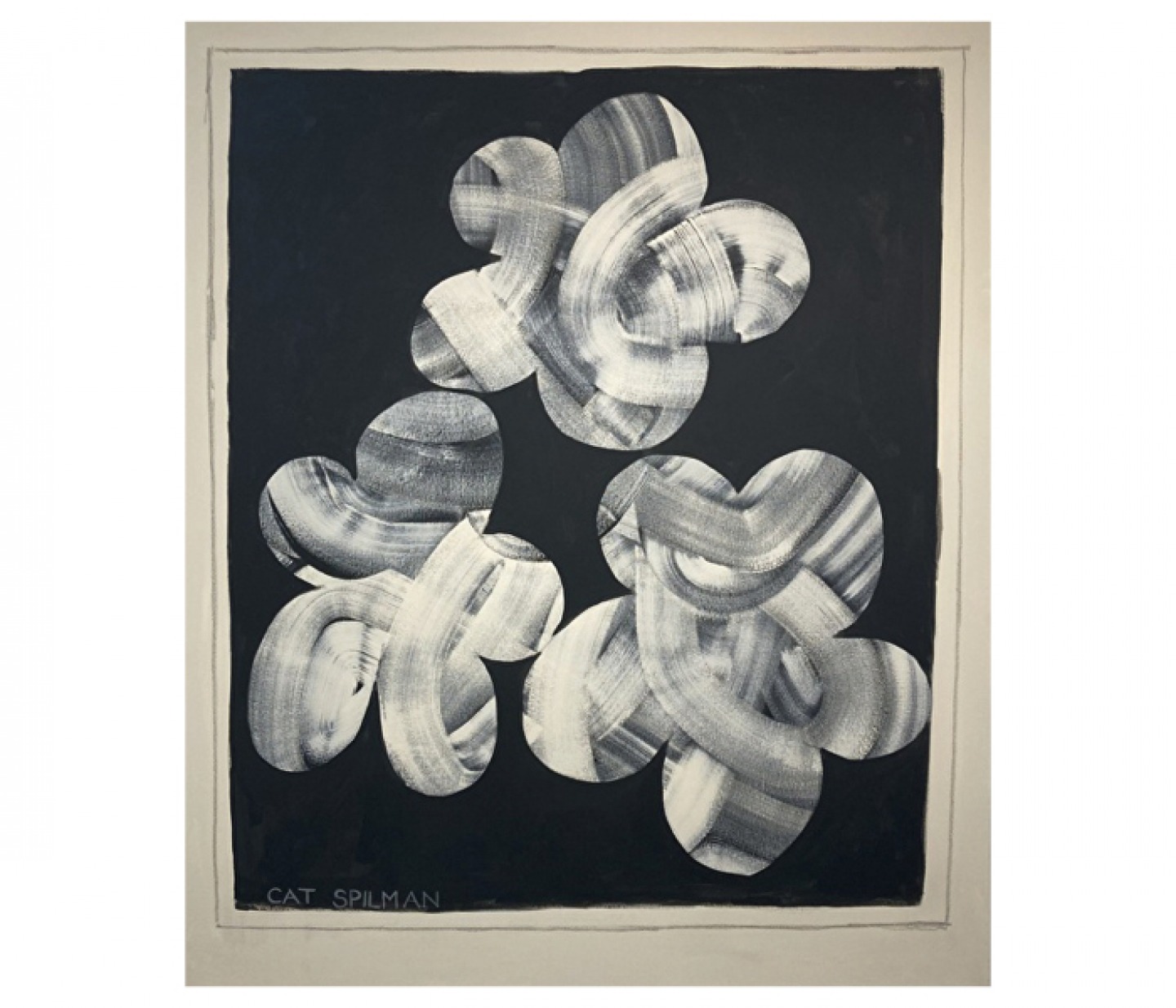Meet American Abstract Artist Cat Spilman from York

Abstract artist Cat Spilman moved from New York to York, but her art is inspiring people worldwide
Cat studied at the School of Visual Arts in Manhattan, then worked as a scenic artist for film and television in New York for the next eight years. Cat’s husband Jordan, who was also a scenic painter, was sadly diagnosed with cancer during the pandemic. Jordan’s family couldn’t visit because of the lockdowns in place at the time so the couple moved to York to be closer to them. Sadly he passed away around four months after the move. 'I ended up getting a studio because I needed space to get back in touch with my work and have creative time that was cathartic and therapeutic,’ explains Cat. ‘That’s when I started working with the two colours I work with now [black and white] and that was the foundation for the style I work in now. I’m very lucky that this has turned into something I can now do full time.’
Cat’s paintings are acrylic on canvas and feature solid shapes, overlapping lines and a limited colour palette. ‘It’s really not terribly cerebral, it’s all emotional,’ she explains. ‘I think of them as self portraits. Of course not figuratively, but in a very interpretative way they’re all snapshots of who I am in the moment and what I’m dealing with. I often think of them like when you have a dream and you’re not really analysing it while you’re in it but when you wake up you start to connect the dots. When I’m painting I’m not trying to paint with any kind of message or specific thought in mind, I’m just painting based on how I’m feeling in the moment. Then when I look at the painting days or weeks later, I can see what that was about.’
Read More: The Best Places for Afternoon Tea Across Yorkshire


Cat uses house paints to create these pieces, the same kind she would use when working as a scenic artist. ‘When I began painting like this I really wanted to limit myself with the colour palette because I think limitation encourages creativity and I wanted consistency,’ she continues. ‘Because it’s always just the two colours, no matter what the content of the painting is, it always feels like mine. That was my way of creating an identity for my work. I use (mostly) house painting brushes as well (sometimes smaller fine art ones) and they are broad strokes. With smaller brushes, I can get too bogged down with details and at that point I feel like the energy is gone.
Read More: Discover the Unique Faith Museum Now Open in Bishop Auckland

‘I’ve always really loved classic films, my thesis was on black and white negative and reversal films, and I’ve always had a fondness for that aesthetic. Cinema and architectural design (particularly Bauhaus) definitely plays a big role. Also people like Cy Twombly. A lot of people have asked if I’m a Barbara Hepworth fan because they see a lot of her in my work. I wasn’t when I started painting, but I have since become a big fan.’
Cat has sold various pieces at Rhodes Contemporary Art in London and at Suburbia Contemporary in Barcelona. ‘It’s funny because there are some pieces I’ve created and thought “that’s the best thing I’ve ever done” and then I’ll come back to the studio the next morning and think “it’s horrible!”. The opposite too. There’ll be times when I’ve been really frustrated with a piece and that I just can’t get it right but then I’ll come back the next day and think “actually, that really has something”,’ she laughs. ‘I don’t think I’m the best judge exactly of what’s good. For me, it’s good if it has satisfied what I need to express. It’s really nice because sometimes there are paintings that I didn’t like as much but people have told me that’s the best thing I’ve done, and it’s made them feel something, or reminded them of something in their life. I think that’s what makes a successful painting. I create the painting and therefore begin half the conversation, but the viewer brings the other half. The conversation is different for every person that sees it and some pieces really resonate with people.’
Cat prides herself on her individuality and ensuring her artwork stays true to her, and that’s the advice she’d give budding artists too. ‘The biggest thing for me is not trying to emulate anyone else that you think is good,’ she adds. ‘I think the reason I enjoy what I do so much, and the reason I see so much consistency in what I do, is because I paint what I like. The colour palette, the style. I just decided to paint what I would want in my house essentially. What I would want to look at, what makes me happy, and what I find interesting. You know yourself and you know what you like so if you stay true to that, I think that’s how you find your voice. The most important thing is to be honest and to present honest work.’
Read More: Dave Turner on His Lead Role in Ken Loach's New Film The Old Oak
Cat is thankful for the support she’s received from the people in Yorkshire since moving here. ‘I moved here from Manhattan where you don’t make eye contact or small talk – it’s very much mind your own business, and there’s a specific pace and hum,’ she says. ‘There’s something about that that I loved, but York is the friendliest place I’ve ever experienced. Even people who don’t necessarily have experience with fine art have been so kind and supportive. I had so many come from York to my opening in London last year – it was incredibly generous of them to make that trip. The friendliest, most welcoming, lovely people, I think, are in Yorkshire. I feel very, very lucky.’
Cat has been working on pieces for her solo show in London which runs ‘til Saturday 30th September. ‘My paintings are obviously abstract but there’s something about the human form that leads to my eye and I’d like to see how that would translate into a 3D representation,’ she says. Meanwhile her artwork continues to be appreciated worldwide. ‘My work will be at an Enter Art Fair [the largest international art fair in Scandinavia] in Copenhagen in August,’ Cat continues. ‘I’d feel very lucky if I continue having shows and sharing my work. I’d love to be able to travel with work more. Copenhagen will be really interesting – I’m not sure what it is but my work seems to really resonate with people in Scandinavia and Germany. There’s a cultural design element to it. I think it’s really interesting to see how different countries’ cultural aesthetics inform taste. It doesn’t seem to be random. It seems like different people from different parts of the world seem to like different parts of my work, and that’s really interesting.’










